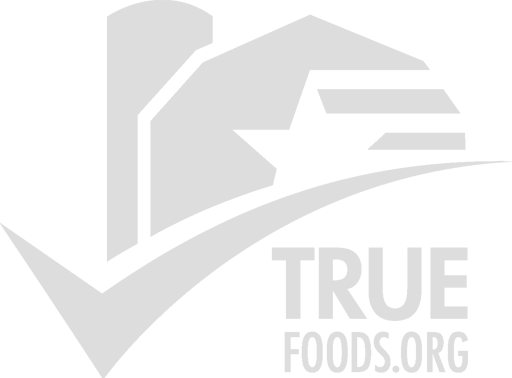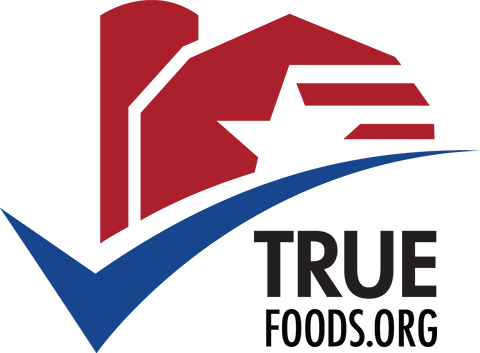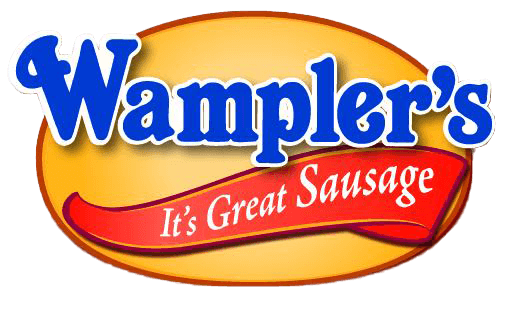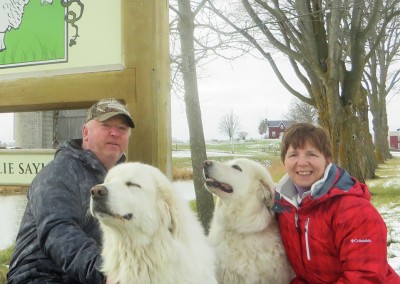
A Trustmark.
True Foods™ provides assurance to discerning consumers that food products bearing this trustmark are verified and continually monitored from farm to shelf to ensure that they consistently conform to the label claims on the package.
TRUST
Americans enjoy some of the safest and most nutritious food available in the world. Today, many Americans want assurances that their meat, milk and egg products are produced the way that the statements included on the food labels outline and these products are consistently true and verified.
Working directly with Farmers, Food companies and the Unit States Department of Agriculture (USDA) Food Safety and Inspection Service (FSIS), True Foods™ brings the truth and transparency to Americans who want to know where their food comes from, how it was raised and what it was fed.
TRUTH
Many Canadians are already enjoying food products that claim to be enriched with various vitamins, probiotics, minerals, Omega 3 or claim to be raised without the use of hormones, antibiotics, animal by-products or vegetable grain fed.
Nutrient enrichment levels are tested in food labs to confirm the label claims while “raised without” claims must be approved through animal feeding protocols and verified through regular auditing processes that flow from farm to fork.
TRANSPARENCY
True Foods™ creates and manages these complex claim verification systems while providing transparent access to the stories behind the products that bear the True Foods™ Trustmark.

Verifiable Claims
Below are the verifiable label claims found on various food products in America. These claims can sometimes be confusing, which is why we’ve outlined each of them so that you can better understand what they all really mean. Click on a claim below to see its description.
Raised Without Antibiotics (RWA)
To use this claim, source animals cannot have been given antibiotics in their feed, water or by injections. This includes ionophores (such as Monensin) which are recognized as antibiotics by the Food Safety and Inspection Service (FSIS).
No Antibiotics Important to Human Medicine (NAIHM):
No Antibiotics Used that are Medically Important to Human Medicine as defined by the World Health Organization (2012). Critically Important Antimicrobials for Human Medicine. (3rd Revision). ISBN 978 92 4 150448 5.
Click here to learn more
Organic
For information about the National Organic Program and use of the term “organic” on labels, refer to these factsheets from the USDA Agricultural Marketing Service: For information about the National Organic Program and use of the term “organic” on labels, refer to these factsheets from the USDA Agricultural Marketing Service:
• Organic Food Standards and Labels: The Facts
• Labeling and Marketing Information
Grass Fed
These claims require that the animals only eat the diet claimed for the lifetime of the animal, with the exception of milk consumed prior to weaning. “Grass Fed” or “100% Grass Fed” claims may only be applied to meat and meat product labels derived from cattle that were only (100%) fed grass (forage) after being weaned from their mother’s milk. The diet must be derived solely from forage, and animals cannot be fed grain or grain by-products and must have continuous access to pasture during the growing season until slaughter. Forage consists of grass (annual and perennial), forbs (e.g., legumes, Brassica), browse, or cereal grain crops in the vegetative (pre-grain) state. Hay, haylage, baleage, silage, crop residue without grain, and other roughage sources may also be included as acceptable feed sources. Routine mineral and vitamin supplementation may also be included in the feeding regimen.
Vegetarian Fed
Requires no use of any animal by products including, but not limited to: animal fats and shortenings, blood meal, feather meal, poultry by products, meat and bone meat, bakery meal, and in certain cases dried distillers grains.
Excellent Source of Selenium
also displayed as (HIGH IN SELENIUM OR RICH IN SELENIUM) Food product contains 20% or more of the Daily Value (DV) per Reference Amounts Customarily Consumed (RACC) or 14mcg per serving. g.
Selenium is a dietary antioxidant involved in the formation of a protein that defends against oxidative stress.
Free Range or Free Roaming (Poultry)
Producers must demonstrate to the Agency that the poultry has been allowed access to the outside.
Raised Without the Use of Added Hormones
No Hormones Administered or No Steroids Administered) Hormones are only approved for use in beef cattle and sheep raising. They are not approved for use in poultry, swine, veal calves, or exotic, non-amendable species (e.g., bison and goats). Therefore, FSIS will not approve the phrase “no hormones administered” on poultry, pork, veal, or exotic, non-amendable meat products labels unless it is immediately (directly) followed with the statement: “Federal regulations prohibit the use of hormones in poultry (or pork, veal, or exotic, non-amendable meat products).”
Raised Without Growth Promotants (Stimulants)
To display this claim, the animal or fish must not have any hormone implants (only applies to beef) nor receive any beta agonists from birth to harvest. Beta-agonists* can be administered through swine, beef cattle and turkey feeds by way of Ractopamine® based products under the trade names Paylean®, Optiflexx®, Engain® and Actogain®.
*Beta-agonists are a class of non-hormonal compounds, their mode of action is to bind to receptors on fat cells in the animals’ body and redirect and reduce the metabolism of fat. Consequently, less fat is produced and less fat is stored in the carcass. At the same time the compounds bind to receptors on muscle cells and redirect and increase the size of muscle fibers. Muscle fiber size replaces some of the weight normally found from fat and the total carcass contains a higher percentage lean muscle. These actions reduce the energy supplied by the feed to produce weight gain. With more weight produced by the same level of feed intake feed efficiency is increased.
(Source: Penn State Extension)
No Animal By-Products (NAB)
To display this claim, meat, poultry, and fish products, must be raised on feed free of ingredients or components of animal origin, including animal products and animal by-products.
It should be noted that it is understood that the animals subject to the feed claims, except for chicken and fish, were nourished with their mothers’ milk. This milk is not taken into consideration when evaluating a claim for the absence of animal products and animal by-products in the animal’s diet.
Animal Products are defined to include cream, eggs, milk, non-fertilized ova and semen. Animal By-products are defined to include blood or any of its components, bones, bristles, feathers, flesh, hair, hides, hoofs, horns, offal, skins and wool, and anything containing any of those things.
Contains XXMG Docosohexanoic Acid (DHA) Per Serving
Factual statement to the lab tested quantifiable amount of DHA per serving. The FDA has not released Dietary Reference Intake (DRI) amounts for DHA.
Contains XXMG Omega 3 Fatty Acids Per Serving
Factual statement to the lab tested quantifiable amount of Omega-3 Fatty Acids per serving. This is the sum of all fatty acids present in the food product. The FDA has not released Dietary Reference Intake (DRI) amounts for total Omega-3 content.
Natural
A product containing no artificial ingredient or added color and is only minimally processed. Minimal processing means that the product was processed in a manner that does not fundamentally alter the product. The label must include a statement explaining the meaning of the term natural (such as “no artificial ingredients; minimally processed”).
Halal and Zabiah Halal
Products prepared by federally inspected meat packing plants identified with labels bearing references to “Halal” or “Zabiah Halal” must be handled according to Islamic law and under Islamic authority.
Animal Welfare and Environmental Stewardship
These claims describe how animals are raised based on the care they receive by the producer or how the producer maintains the land and replenishes the environment. FSIS has not defined these claims in regulations or policy guidelines. For animal welfare claims, such as “Raised with Care” or “Humanely Raised,” FSIS will only approve a claim if a statement is provided on the label showing ownership and including an explanation of the meaning of the claim for consumers, Examples of this type of claim: Humanely Raised*, Sustainably Farmed*, and Raised with Environmental Stewardship*. (*Note: These claims require additional terminology to define their meaning on the label. The definitions must appear with the claim or be connected by a symbol on the panel in which the claim was first made.)
Living/Raising/Raising Conditions
These claims refer to the environment in which the animals were raised during their lifespan. Examples of this type of claim: Cage or Crate Free*, Free Range*, Not Confined*, and Pasture Raised.* (*Note: These claims require additional terminology to define their meaning on the label. The definitions must appear with the claim or be connected by a symbol on the panel in which the claim was first made.) Additional examples of this type of claim: Free Roaming, Pastured Fed, Pasture Grown, Meadow Raised. These claims are also acceptable when the animal from which the products are derived has continuous free access to the outdoors for a minimum of 120 days a year
Source/Traceability
This type of claim demonstrates how the animal can be traced back to its farm of origin from birth to slaughter/harvest. Examples of this type of claim: Source Verified and Traceable to [Name of Farm of Origin].
NON-GMO
Recent legislation was enacted requiring the secretary of agriculture to develop and implement a mandatory national bioengineered food disclosure standard within two years. In the wake of such legislation, FSIS is allowing the use of the terms “genetically modified organism” or “GMO” in negative claims provided that the label or labeling is otherwise truthful and not misleading.
FSIS has developed a compliance guide for companies that seek to make label or labeling claims concerning the fact that bioengineered or GM ingredients were not used in a meat, poultry or egg product.
Consistent with past practice, FSIS will continue to allow the use of synonymous terms such as “genetically engineered.” If FSIS has approved an organic claim on the product label, establishments may add an applicable negative claim of the kind discussed in the guidance.
Because FSIS cannot independently verify negative claims for ingredients or feed, the agency has required establishments that make these claims to comply with standards established by a third-party certifying organization. FSIS currently requires that the third-party certifying organization’s standards be publicly available on a website and the label or labeling disclose the website address of the third-party certifying organization.
Examples of such claims for the meat or poultry component that was raised on feed containing non-genetically modified ingredients that FSIS will accept are: “Pasture raised beef fed a vegetarian diet with no bioengineered ingredients,” “Chicken raised on a diet containing no genetically engineered ingredients,” or “Derived from beef fed no GMO feed.” FSIS will utilize the definition of “bioengineering” to refer to a food that contains genetic material that has been modified through in vitro recombinant deoxyribonucleic acid (DNA) techniques and for which the modification could not otherwise be obtained through conventional breeding or found in nature.
One common 3rd party verification is the Non-GMO Project seal (“the butterfly seal”) which was first approved by FSIS in 2013, and that approval remains in effect.
Third Party Certification
FSIS accepts animal raising claims verified by third-party auditing or certifying program. Examples of this type of claim: USDA PVP (administered by AMS), Certified Organic by National Organic Program (NOP), or Global Animal Partnership (GAP).
Farmers You Can Trust
Meet some of the farmers who are part of True Foods™.
You’ve Got Questions, We’ve Got Answers
You may have some questions about True Foods™ that other people have asked before. Click below to read our answers to some common questions or to contact us directly.





